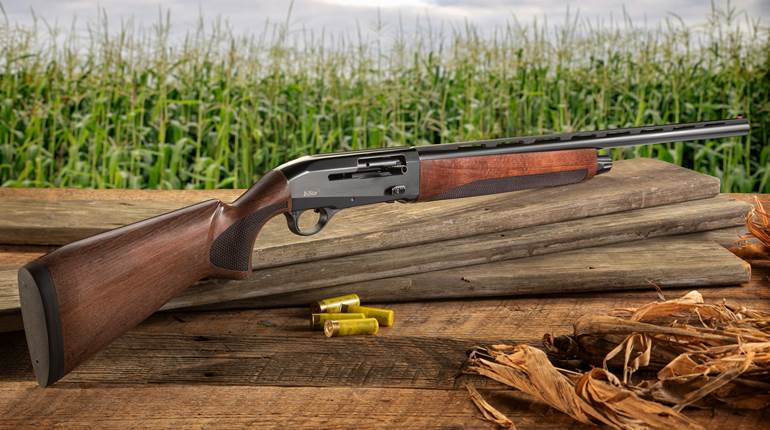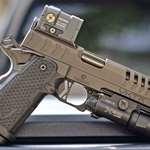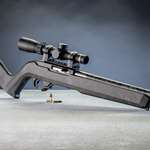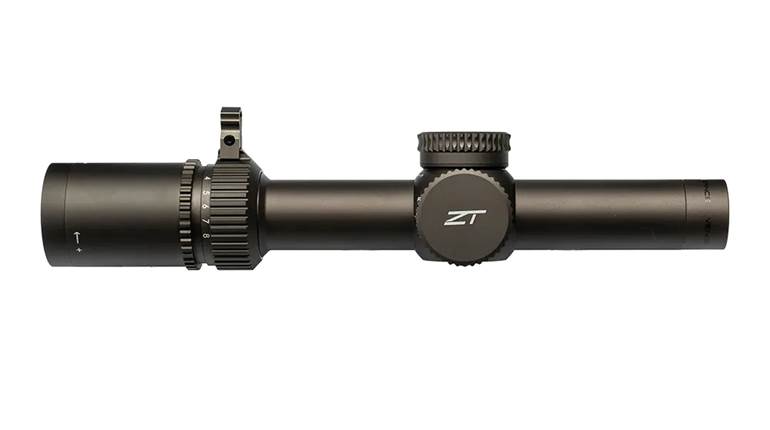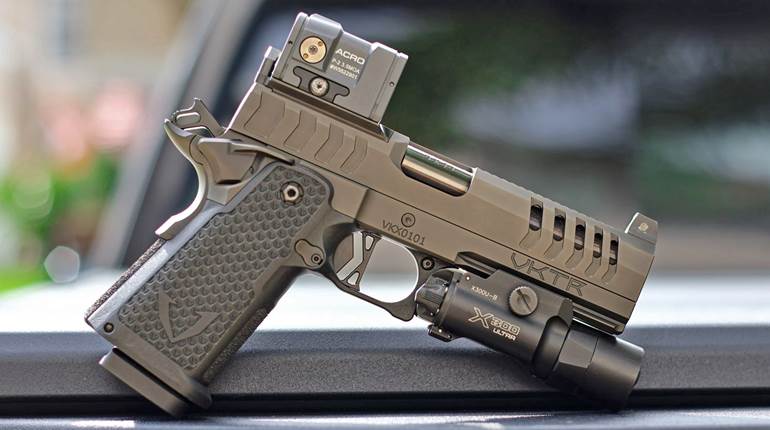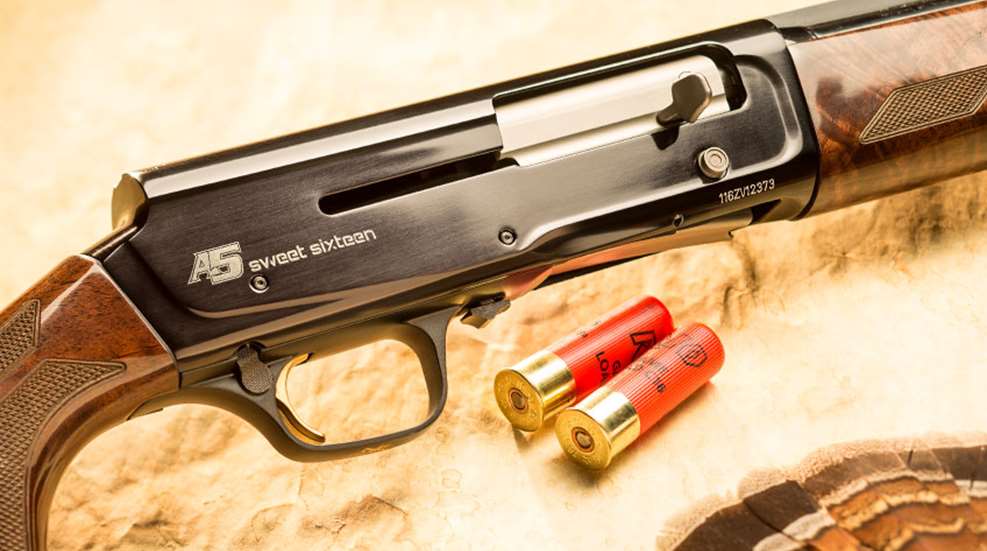
In 1903, two semi-automatic shotguns revolutionized hunting. John M. Browning’s long-recoil-operated Automatic-5—“Five shots under your finger,” read the advertising—and Swedish gunsmith Carl Axel Theodor Sjögren’s inertia-operated “Normal” shotgun. Pump guns had yet to exist for a full two decades, and yet here were shotguns that did all the work, save aiming the shot. Sjögren’s scattergun sold in modest numbers and was soon forgotten in favor of Browning’s Auto-5, but they would meet again in the future.
The darling of the Browning Auto-5 line was the Sweet Sixteen. Built on a sleek 20-ga. action, the Sweet Sixteen was made by Fabrique Nationale in Belgium from 1937 to 1975, although there was an understandable break from 1940 until 1947 due to World War II.
In 2012, Browning again met Sjögren, in the form of Browning’s new inertia-operated A5. Produced first in 12-ga. models, when the 16 gauge came along in 2016 it was built on its own scaled frame.

The A5 Sweet Sixteen’s Kinematic Drive uses a rotating bolt head ubiquitous to all inertia-operated shotguns. A takeaway from semi-automatic military rifles, the rotating bolt engages matching recesses in the barrel extension when the action is in battery. When the gun is discharged, the bolt remains stationary while a carefully calibrated spring tightens the grip of the locking lugs. When the gun’s recoil slows, the spring decompresses, allowing the lugs to be rotated into the open position and the stored inertia in the mass of the bolt to move it rearward. If there is not a fresh round in the magazine, the bolt is locked to the rear. If a fresh round is present, it is released from the under-barrel tubular magazine, tripping the bolt release and causing the bolt to travel forward into battery.
Sights on the new Browning consist of a red fiber-optic rod found near the muzzle and a white brass bead mounted mid-barrel. The test Sweet Sixteen weighed 5 lbs., 7 ozs., and, being of such a light weight, might be expected to portend excessive recoil. In shooting patterns and hunting pheasants in the field, however, recoil was perceived to be mild. Part of the softened recoil is due to Browning’s Inflex II recoil pad that combines ultra-soft materials with its internal design that causes the pad to move the gun downward away from the cheek when absorbing recoil.
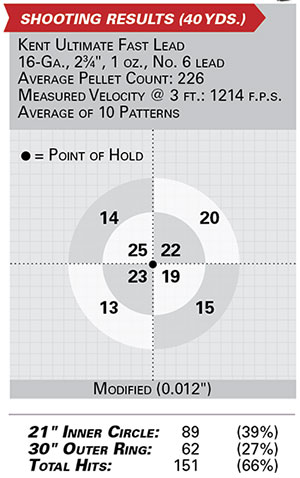 Being of 21st century design, the Sweet Sixteen comes with three choke tubes—Improved Cylinder (0.008" constriction), Modified (0.012") and Extra Full (0.045"). Pattern testing at 40 yds. made use of the Modified tube, as this would seem to be the most versatile. The results of the patterns are shown graphically nearby. We found that this choke provided tight modified percentages, 66 percent, with No. 6 Kent Ultimate Fast Lead loaded with its Diamond Shot that combines extra-hard lead shot with a proprietary coating. This load gave an average velocity of five shots over our chronograph of 1214 f.p.s.—very near the box-marked 1220 f.p.s. While at the patterning board, we also shot some of Kent’s new 1-oz. No. 5 Bismuth shotshells that the firm is loading for the 16-ga. market, and it turned in a close-to-identical percentage, 64, compared with lead. This expansion of the 16 gauge’s ammunition into non-lead shot waxes well for those hunting on state and federal lands that require non-toxic shot, as the lethality of bismuth—plus its softer-than-steel composition—make it a good choice for upland and waterfowl alike.
Being of 21st century design, the Sweet Sixteen comes with three choke tubes—Improved Cylinder (0.008" constriction), Modified (0.012") and Extra Full (0.045"). Pattern testing at 40 yds. made use of the Modified tube, as this would seem to be the most versatile. The results of the patterns are shown graphically nearby. We found that this choke provided tight modified percentages, 66 percent, with No. 6 Kent Ultimate Fast Lead loaded with its Diamond Shot that combines extra-hard lead shot with a proprietary coating. This load gave an average velocity of five shots over our chronograph of 1214 f.p.s.—very near the box-marked 1220 f.p.s. While at the patterning board, we also shot some of Kent’s new 1-oz. No. 5 Bismuth shotshells that the firm is loading for the 16-ga. market, and it turned in a close-to-identical percentage, 64, compared with lead. This expansion of the 16 gauge’s ammunition into non-lead shot waxes well for those hunting on state and federal lands that require non-toxic shot, as the lethality of bismuth—plus its softer-than-steel composition—make it a good choice for upland and waterfowl alike.
One of the selling points of the original Auto-5 was its square or “hump” back that advertising said led the eye to the target—it was primarily to accommodate the recoiling barrel and bolt—and this distinctive feature has been retained, although it is not quite as square and prominent as on the original. Handling in the field was excellent. The balance is between the hands with the slightly longer 28" barrel, and due to its light weight, would make carrying it through the grouse woods, behind pointers in quail cover or through an endless Midwest corn field for pheasants easy and comfortable for the entire day.

One of the reasons for the Sweet Sixteen’s light weight is the aluminum receiver that is only a parts carrier, as all the forces of recoil are taken up with the steel bolt, bolt head and the barrel extension. So confident is Browning of the durability of the Sweet Sixteen, that it provides a 100,000-round guarantee against premature wear. The pistol grip-style stock and fore-end are of dark-stained, glossy-finished checkered walnut. The checkering appears to be laser-cut, but in keeping with the company’s quality standards, is probably hand-pointed.
All-in-all, the Browning A5 Sweet Sixteen is a sweetheart for the 16-ga. aficionado, and for those unfamiliar with this old, traditional gauge, it’s a treat in the field and worth checking out.

















